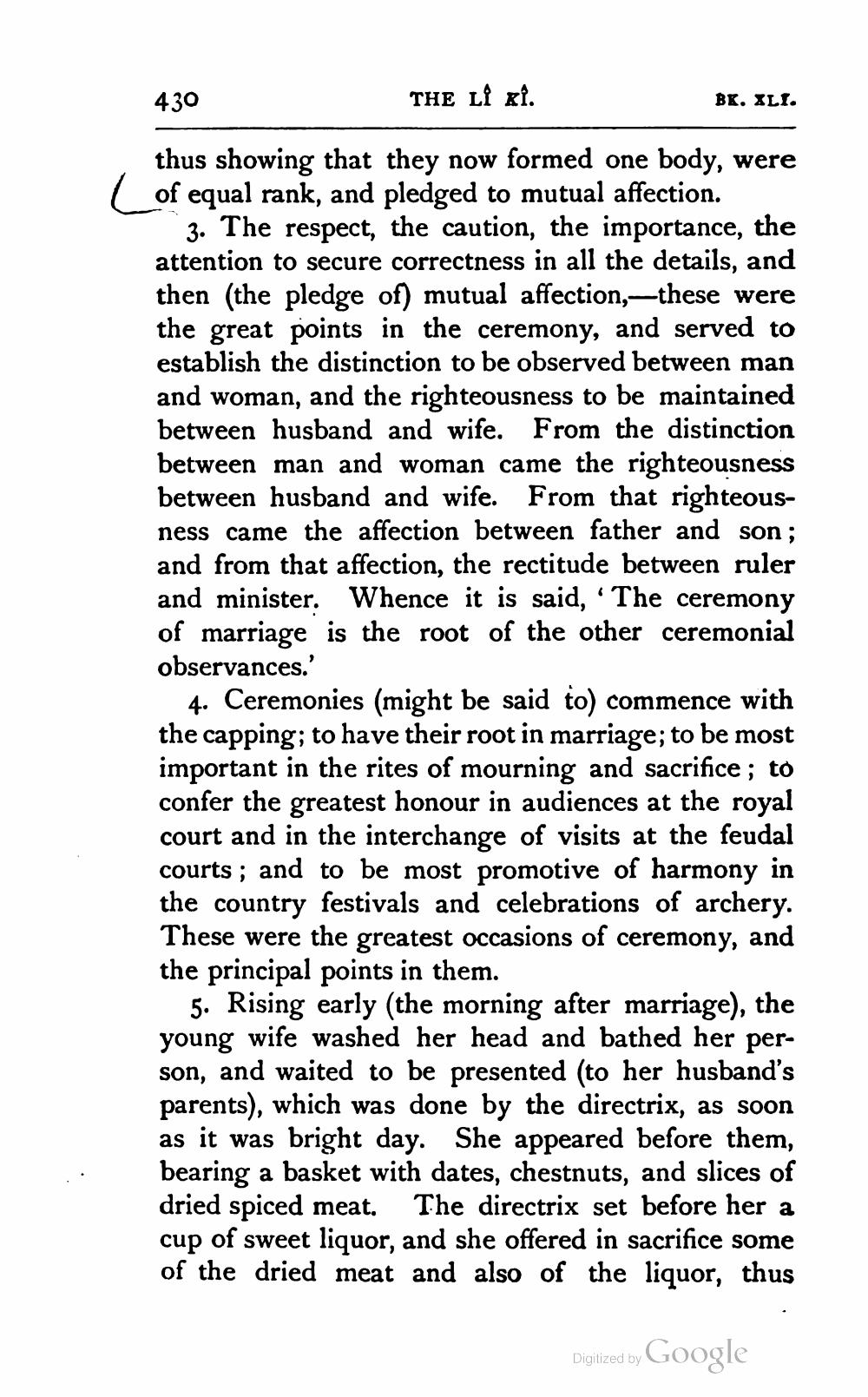________________
430
THE Li ki.
BK. XLI.
thus showing that they now formed one body, were of equal rank, and pledged to mutual affection.
3. The respect, the caution, the importance, the attention to secure correctness in all the details, and then the pledge of) mutual affection,—these were the great points in the ceremony, and served to establish the distinction to be observed between man and woman, and the righteousness to be maintained between husband and wife. From the distinction between man and woman came the righteousness between husband and wife. From that righteousness came the affection between father and son ; and from that affection, the rectitude between ruler and minister. Whence it is said, 'The ceremony of marriage is the root of the other ceremonial observances.'
4. Ceremonies (might be said to) commence with the capping; to have their root in marriage; to be most important in the rites of mourning and sacrifice; to confer the greatest honour in audiences at the royal court and in the interchange of visits at the feudal courts; and to be most promotive of harmony in the country festivals and celebrations of archery. These were the greatest occasions of ceremony, and the principal points in them.
5. Rising early (the morning after marriage), the young wife washed her head and bathed her person, and waited to be presented to her husband's parents), which was done by the directrix, as soon as it was bright day. She appeared before them, bearing a basket with dates, chestnuts, and slices of dried spiced meat. The directrix set before her a cup of sweet liquor, and she offered in sacrifice some of the dried meat and also of the liquor, thus
Digitized by Google




